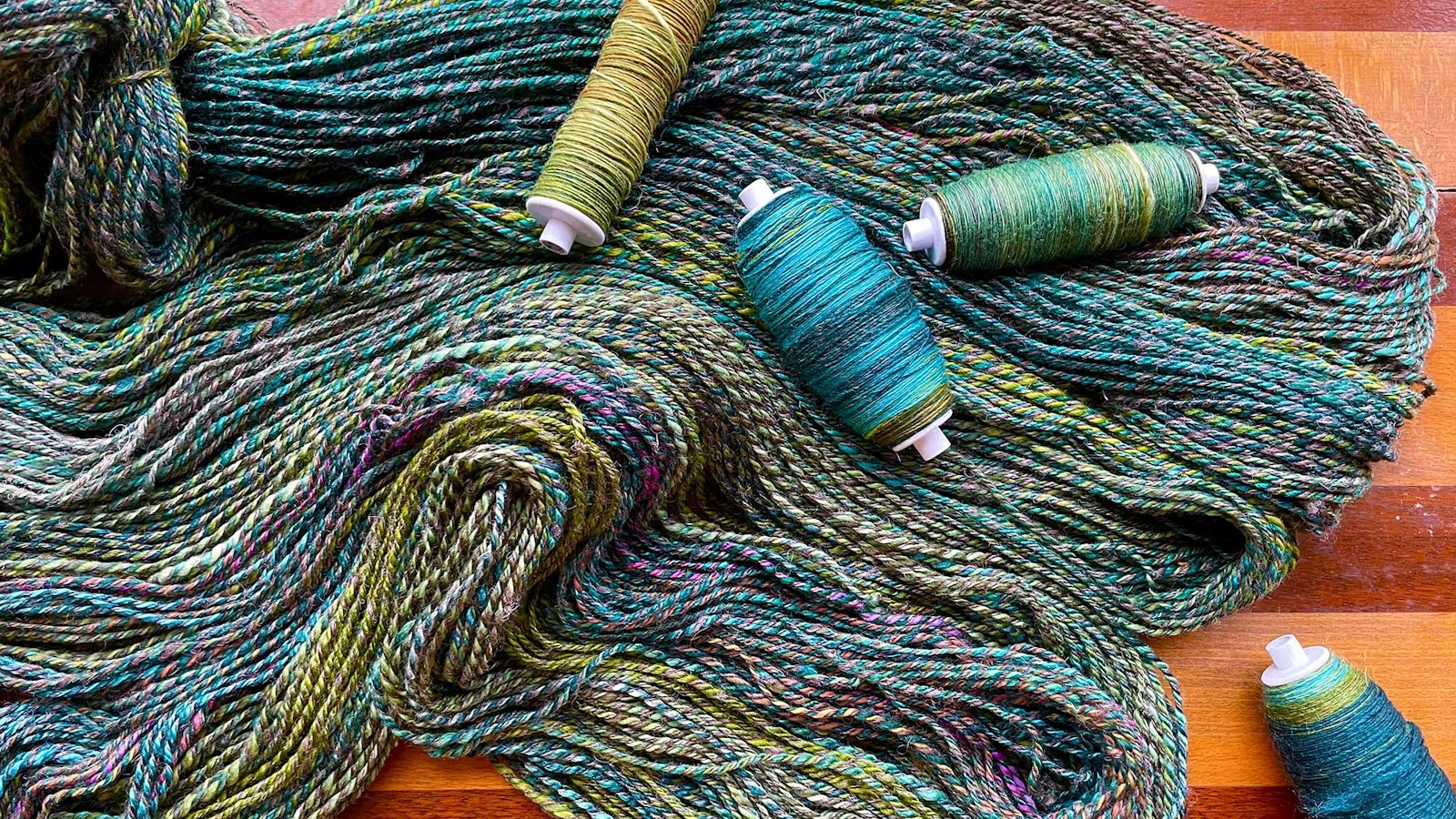I feel better when I give myself time to sit at my wheel and spin. During the long days of summer, I started taking more spinning breaks even if I could only sit down for 10 minutes or so. Rather than watching a clock, I kept a neat pile of dyed tops that had been pulled into short strips near my wheel. I’d spin to the end of a strip and then go back to my day, breathing a little easier. I think of this as solace spinning—just spinning, no judgment or measuring or fussing.
As I explained in an August post, I wanted my solace spinning to result in a sweater that used up random yet delicious stash fiber. So, I curated a pile of green fibers—roving and tops, a variety of wools and silks. Then, I set three parameters on my solace spinning (follow the link above). Here’s where I’m at now:
Step 1. Spin for bliss, ply later. Default spinning for miles of singles: check.
Step 2. Time to ply, adding a uniting color. Here we go!
My Go-To Gray
Choosing one solid or slightly variegated solid colored fiber to ply with all of your scrappy singles can help a palette feel more cohesive. Gray is my go-to for uniting colors within a project, but for you, it might be plum or indigo. And when choosing a uniting color, I find that hue (a wedge on the color wheel) is perhaps less important than value (the relative lightness or darkness of a color).
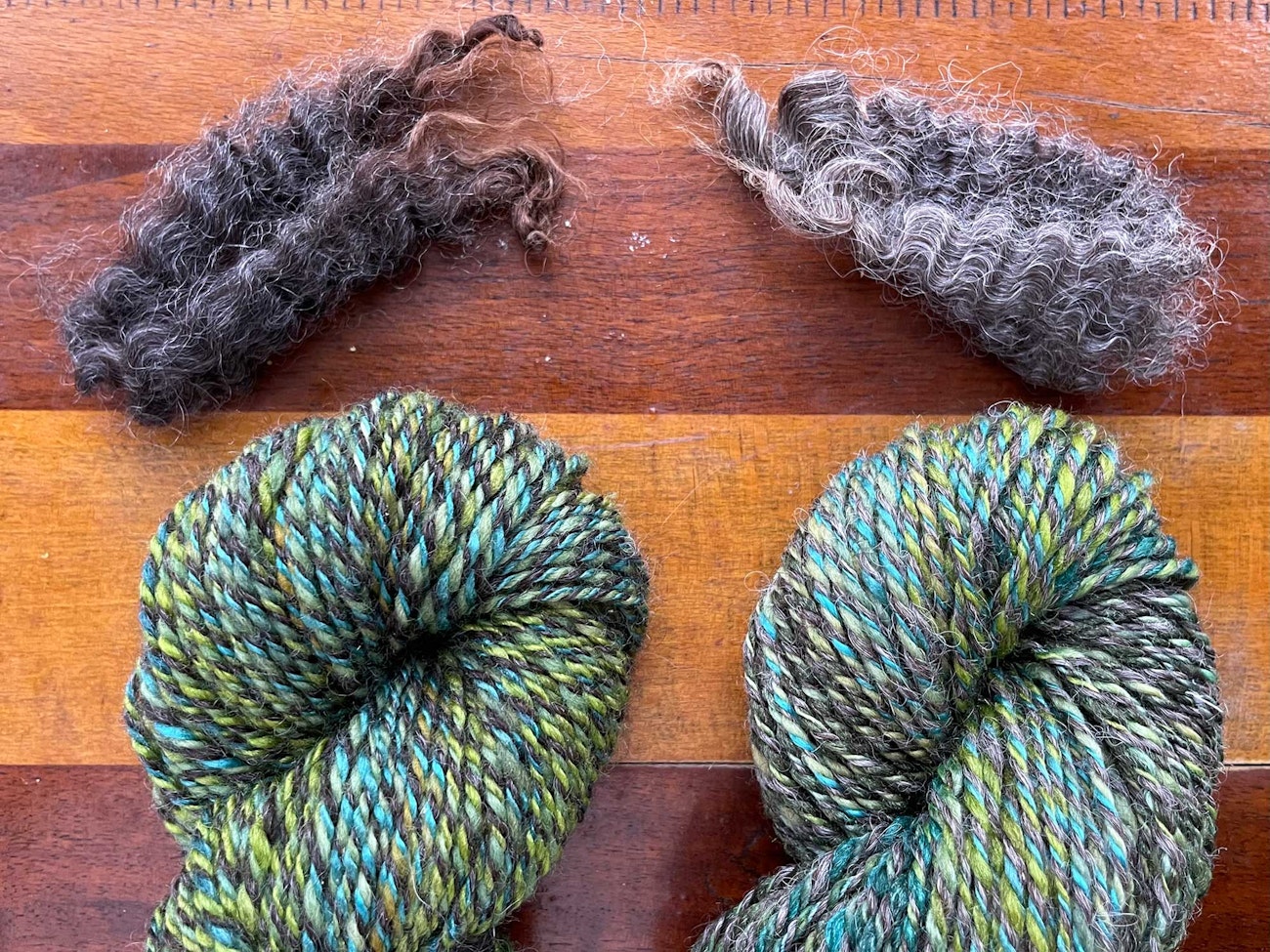
From left: Kate first tried plying with a dark charcoal gray. Then she tried a medium gray fleece.
I had originally planned to use a very dark gray, nearly black fleece from one of my Border Leicester lambs. I spun up 20 yards or so of singles to sample and plied it with two singles of my scrappy greens.
I didn’t like it.
In trying to identify what felt “off,” I took a look again at the hues and values of the fibers I was working with. Here’s a picture of the fiber I started with, including the charcoal fleece. After creating my plied sample, I realized that the charcoal color was darker than the darkest greeny blues in my scrappy mix. This created more contrast and not enough of that unifying feeling that I was going for.
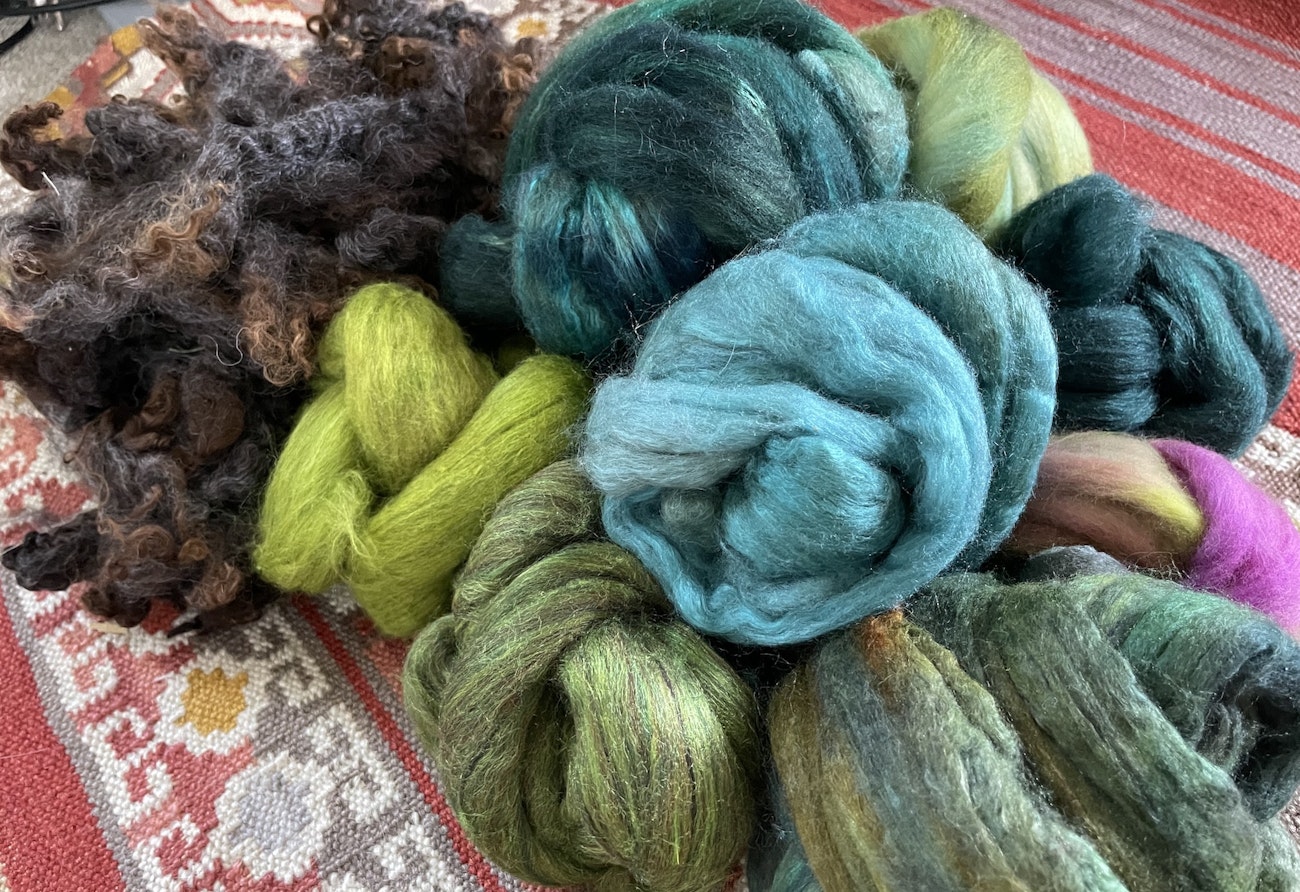
Kate used up lovely bits of fibers that were much too nice to be called leftovers. Something felt "off" when she added in the charcoal fleece.
So, I grabbed another lamb fleece from my shepherd’s stash and started carding. The second fleece is closer to a medium gray, so in terms of value, it falls in the middle of the light to dark range of all of my fibers. This plied yarn had the smoothed contrast and subdued vibrance that I didn’t know I was after. The time I was spending with William Morris was clearly seeping into my sweet scrap sweater plans!
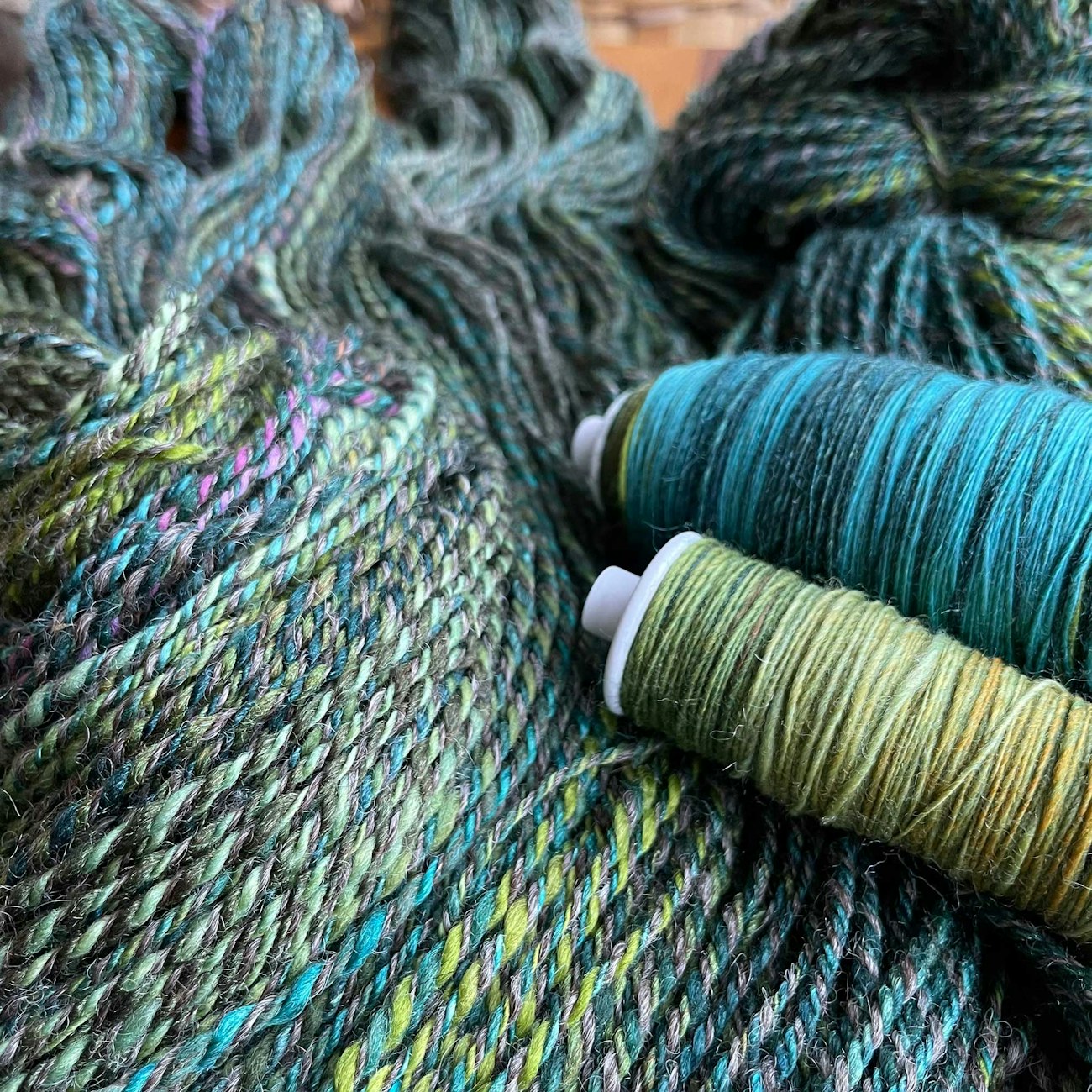
Plied yarns in a palette that looks more Arts and Crafts to Kate’s eye the longer she looks.
I’ll get back to plying and dreaming about my wallpaper-inspired, scrappy sweater for now. Methods for choosing a needle size, swatching, and finding the right pattern for solace spinning will be coming your way soon.
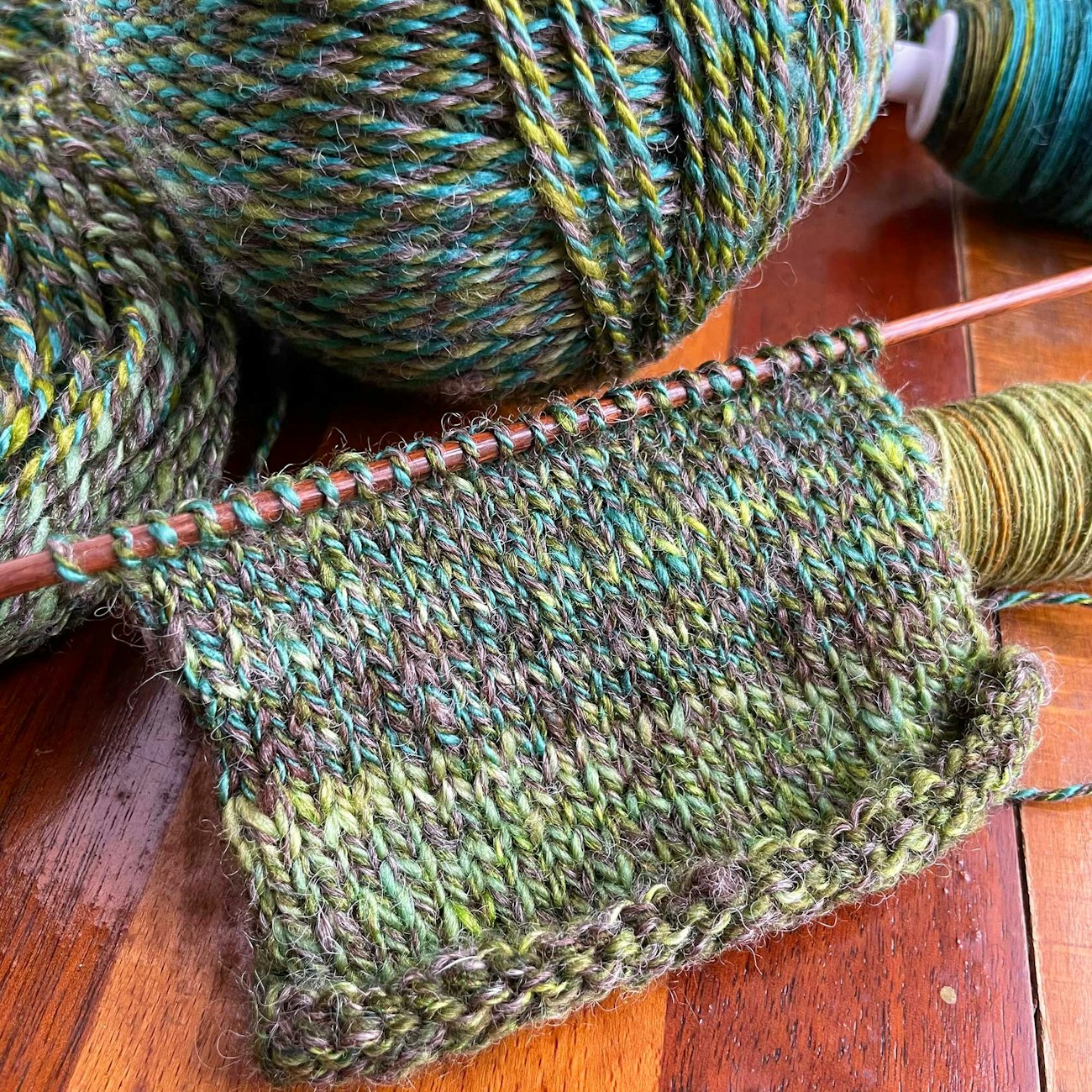
This first quick swatch was knitted using a US 5 needle. Hmmmm...that might need some tweaking.
– Kate

